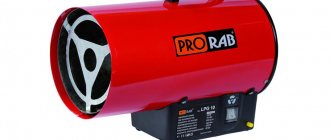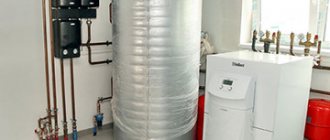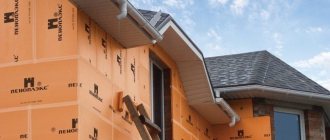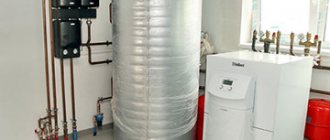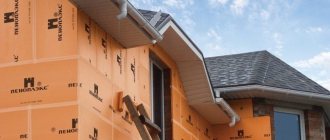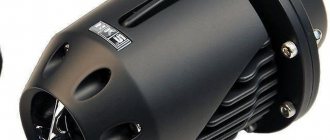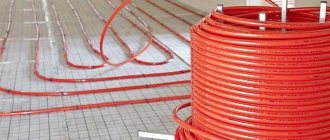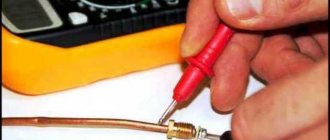It will probably be no secret to anyone that heating a room is the most important task for its owner. On the modern heating equipment market today there is a great variety of devices and devices for heating rooms. Heat guns occupy a very significant and prominent place in this range.
Unlike other types of devices for heating and drying a room, heat guns perform this operation quite quickly and efficiently. It is also worth noting that this type of device appeared relatively recently, but has already gained popularity in various areas of its use.
Therefore, in this article we will describe in detail all the characteristics of heat guns, and also talk about the areas of their application.
What is
A heat gun is essentially a fan heater, which is designed to quickly heat rooms of various sizes.
This device got its name from the fact that it is presented in the form of a metal cylinder, which in appearance resembles an ordinary cannon.
But with all this, you should not associate these two heating devices.
This is due to the fact that a heat gun differs markedly from a fan heater in the following important points:
- has a significantly directed air flow;
- has a wide power range;
- quickly heats large rooms.
Device
Heat gun device.
(Click to enlarge) As a rule, the structural elements of this device are:
- a heating element;
- powerful fan.
The heating element can be presented in the following types:
- a metal spiral made of refractory metals, for example, nichrome (the disadvantage of this type is that such elements intensively release oxygen in the room);
- heating element, which is made of sealed tubes filled with sand;
- a ceramic element, which is presented in the form of a plate with many small cells through which air passes (this type of heating element is the safest among all those presented).
It is also worth noting that the design of the heat gun is equipped with additional components, which include:
- thermostat that effectively protects the unit from overheating;
- a thermostat that will automatically turn on the heat gun when the room temperature drops below the set one.
Review of popular models
Analyzing information on thematic forums, we can identify the following popular gas burners among Russian consumers:
- MASTER BLP 17M . Ideal for heating a garage. Reliable and durable equipment, the reducer is “unpretentious” to the quality of the supplied gas. There is a power regulator from 10 to 16 kW, so it is suitable for garages up to 150 m2. The only negative is manual ignition, although because of this the device almost never breaks down; the manufacturer generally gives a 3-year warranty. The average cost is 9 thousand rubles.
- SPECIAL IGE-15 . Russian-made gun. It is small in size and suitable for use when installing suspended ceilings or for drying walls after painting. Power is 15 kW, but the flow is narrowly targeted. It has 2 heating stages, the kit includes a hose for connecting to the cylinder (with adapters). The average price is 5.2 thousand rubles.
- Caliber TPG-10 . Also made in Russia, power up to 10 kW, suitable for small spaces. The gearbox is collapsible, the manufacturer has provided for its complete replacement with an analogue one. The fan is also serviceable and not pressed into a bearing. But the functionality is minimal. But the cost is only 4 thousand rubles.
- Kroll P 10 . Popular model of foreign production. It works when connected to cylinders, there is a piezo ignition, a safety thermostat and a pressure sensor. The productivity is small - up to 300 m3 per hour, but the flow of heated air is not narrowly targeted, as in other models. The average price is 9.5 thousand rubles.
- Profteplo KG-57 . Industrial type heat gun with a capacity of up to 1400 m3 per hour. Available in two versions - with connection to 220V and 380V. The latter is noisy in operation, but it is not suitable for small spaces. There is flame control, as well as a sensor that turns off the gun when it detects movement in front of it (it can be forcibly turned off). The average price is 11 thousand rubles.
MASTER BLP 17M, one of the best selling models
We recommend our article on the topic - Heating boilers for a private home, where we examined the principle of their operation and how to start the heating system step by step.
In summary, a gas gun is an excellent option for quickly warming up non-residential premises. For residential use this is not the best option, as it requires connection to a chimney. But you can make a cannon yourself; all this will require only 2–3 thousand rubles (for all materials).
Benefits of use
The design and operating principle of the heat gun rightly ensure its popularity in use.
As a unit for quickly heating a room, it has the following advantages:
- easy operation;
- does not require frequent maintenance;
- works silently;
- quickly heats a room of any size;
- The environmental friendliness of use lies in the fact that the heat gun in operating mode does not emit harmful substances into the atmosphere.
One of the disadvantages of a heat gun is the cost of electricity consumption, which, in principle, can be offset by efficient heating of the room.
Pros and cons of diesel guns
If you go by user reviews, the main advantage of solar heaters is autonomy. The air heater is indispensable in situations where there are no other energy sources - main gas and solid fuel, or the electricity consumption limit is severely limited.
Reference. Compressors and fans of powerful models with a heating capacity of over 120 kW consume about 1000 W of electricity. The household series device will “wind” the meter at 200-300 W.
Other advantages of liquid fuel heaters:
- Mobility of installation and efficiency of heating organization. The time required is minimal - I bought a gun - brought it to the place - filled it with diesel fuel - turned on the heating.
- The unit is easy to move from one site to another.
- The efficiency of the heater is quite high - manufacturers claim an efficiency of about 83%.
- Warm-up speed. According to this indicator, a diesel burner outperforms electric heating elements.
- Versatility. The device is suitable for open areas and any large premises, except residential ones.
Let us clarify an interesting point regarding efficiency. Some sellers make the following claims: Indirect combustion diesel heaters are less efficient than direct combustion heaters that emit gases indoors. They say that the efficiency of these installations reaches 100%, since the heat of combustion products is not discharged to the street.
In fact, the efficiency of various guns is approximately the same, but indirect heating devices actually throw some of the heat out along with the smoke. Now open the documentation of any direct combustion heater and read the requirements for safe operation: supply and exhaust ventilation or intensive ventilation is required to remove toxic gases.
The result: direct-flow guns release all the heat into the heated room, but 20-30% of this energy is carried away by ventilation. That is, the actual losses and efficiency of both heating devices are approximately the same, although direct-flow units are cheaper than chimney models.
Disadvantages of heat generators burning diesel and kerosene:
- In terms of price, solar cannons are inferior to electrical appliances - convectors and fan heaters;
- Diesel fuel is not the cheapest energy carrier:
- operation of the heater is accompanied by the smell of diesel fuel and exhaust gases;
- Average and low quality fuel sold at gas stations quickly clogs the working parts of the thermal gun with soot, and the device has to be serviced frequently.
A layer of soot on the lens of a photocell that detects the presence of a flame
Kinds
The entire range of heat guns is usually divided into classes depending on what type of energy carrier is used to produce warm air flow.
Among them, the following important varieties can be distinguished.
Electric heat guns. In addition to industrial purposes, they can also be effectively used for heating living spaces.
It is worth considering an important fact: depending on the power, electric heat guns can be connected to two-phase and three-phase electricity systems. Therefore, when choosing a device of this type, it is necessary to take into account the electrical wiring with which the room is equipped.
One of the most famous companies producing heat guns is Ballu. Unit reviews:
Gas heat gun. It is a very effective heating device, the efficiency of which reaches almost 100%.
To obtain heat flow, natural gas is used, which completely burns out in a heat gun. It is recommended to use this type of units only in non-residential premises.
In addition to such thermal devices, gas heaters are also used. Details can be found here:
Diesel heat gun.
The name of this type of device indicates that diesel fuel is used to generate heat.
As a rule, a unit of this type is used for production purposes.
Water heat gun. A distinctive feature of units of this type is that the heating element is designed in the form of a heat exchanger through which hot water flows.
Infrared heat gun.
The design of this device does not include a fan.
Air heating occurs based on infrared radiation.
It is also worth knowing that a heat gun of this type can only heat a certain area of the room.
Explosion-proof heat gun. This type of units, as a rule, is used to heat rooms with a high concentration of flammable mixtures, in other words, these can be transport hangars, as well as warehouses for fuels and lubricants.
You might be interested in an article on how to choose a heat gun for your garage.
Read an article about possible malfunctions of heat guns and how to fix them yourself here.
How to calculate the power of a heat gun - formula
Using the same values, you can estimate the maximum volume of the room that will effectively heat the device.
In general, the right choice begins with calculating the power. From this “stove” it’s worth dancing further. Otherwise, buy it “by eye,” and then you’ll write reviews like this on YouTube.
To visually estimate and understand what thermal power the gun will require, you can use the following table:
If you choose exactly this power, in just 1 hour the heating unit will be able to immediately raise the temperature by 15 degrees. Of course, if everything is fine with your thermal insulation.
The whole thing can be calculated more accurately using the following formula:
V room volume in m3
T difference in air temperature outside and the temperature that needs to be created inside, degrees C
K coefficient heat loss of the building
860 figure for converting kilocalories/hour to kW/hour
Coeff. select heat losses based on the design of your building.
K=3.0-4.0 - for buildings without thermal insulation
K=2.0-2.9 - there is some thermal insulation (one-brick walls, a simple roof and a regular double-glazed window)
K=1.0-1.9 - building with average thermal insulation (walls of 2 bricks, roof with standard roofing)
K=0.6-0.9 - high thermal insulation (walls and roof with double thermal insulation, double glazing)
For example, let's take a metal garage with a volume of 90 m3 without any thermal insulation. The temperature difference is 30 degrees. That is, when it is -10C outside, you want it to be +20C inside.
Substituting the data into the formula, we find that to heat such a garage, you will need a gun with a power of at least 12 kW. If you have 3 phases, then you might want to consider an electric option.
If only phase-zero comes into the garage or there is no constant light at all, then you are straight ahead with a diesel or gas model.
Only after these calculations do not buy guns with a large margin, even if funds allow.
According to the instructions, each such unit has a minimum volume of heated space. If you have clearly less, you will have problems with noise, rapid oxygen burning, dizziness, etc.
gas
diesel-kerosene or multi-fuel
electric

